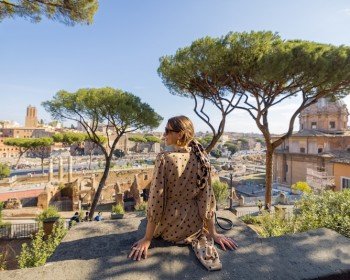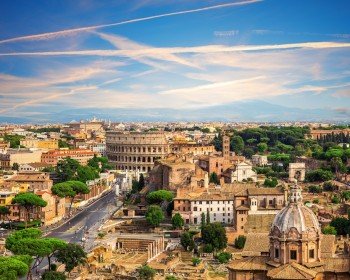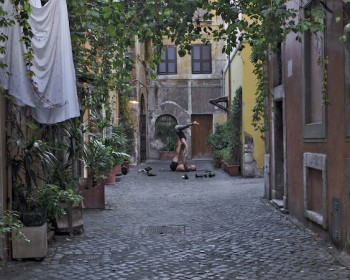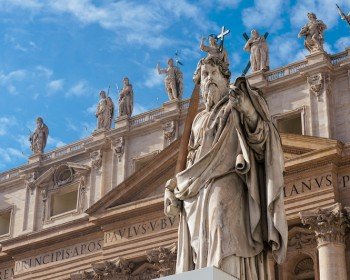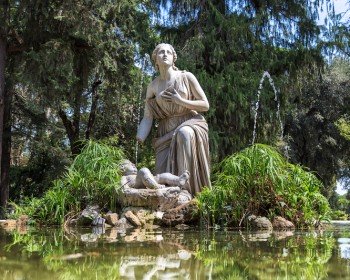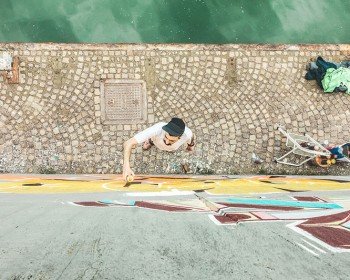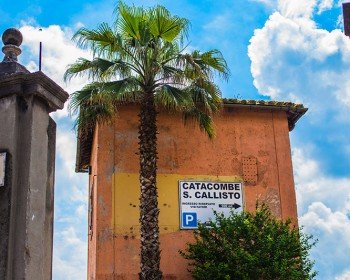What if I told you that Campo Marzio is the Roman district that boasts the greatest artistic heritage? De facto it is one of the most important neighborhoods in Rome.
During the past years writers, artists and film’s directors have celebrated this rione – the Italian word for the district – for its Baroque beauty and its central location. Nowadays luxury boutiques and luxury hotels have moved right in this area transforming Campo Marzio in the mecca for the fashion world, both for tourists and inhabitants. Campo Marzio is the real “Dolce Vita” of the 20th century!
History
It is the fourth Roman rione and today its territory is less extended than the ancient area of Campus Martius. It has always been dedicated to Mars, the god of war, and used for military activities. Since the area was located outside the official borders of the city – the so-called pomerium – it was used as a location to build a place of worship dedicated to oriental divinities. During the Middle Age, Campo Marzio was the most populated Roman rione in the city. Nowadays it hosts some of the major Roman highlights, such as Piazza del Popolo, Spanish Steps and the Ara Pacis Augustae.
What to see in Campus Martius
Below a list of what you should totally visit:
- Spanish Steps
It is one of the most important squares in Rome. It takes its name after Palazzo di Spagna, the seat of the Spanish Embassy among the Holy See. Made of 135 steps, this staircase endures since 1725. It was built mainly to connect the Spanish Embassy with the church of Trinità dei Monti, located exactly at the top of the staircase. In the middle of the square you can appreciate the famous Fontana della Barcaccia, a Baroque fountain sculpted by Pietro Bernini with his son, the world known Gian Lorenzo Bernini. It could be a little tiring to climb up the stairs, but I assure you that the panorama will take your breath away!
Piazza del Popolo
Its name literally means “people’s square” though the name derives from the Latin word “populous” – literally poplars – after which the church of Santa Maria del Popolo takes its name. Formerly Piazza del Popolo was used for public executions. Its structure was designed in Neoclassical style and an Egyptian obelisk stands right in the middle of the square. At the north side of it, you will find Porta del Popolo, a gateway restored by the Italian architect Bernini in 1655. Opposite to the Porta there are two churches known with the name of “twin churches” – Santa Maria in Montesanto and Santa Maria dei Miracoli –. Dating back to 17th century, they are the Baroque side of Piazza del Popolo.
- Pincian Hill
Once located outside the original boundaries of the old city, it overlooks Campo Marzio. Several important families in ancient Rome used to build their houses and gardens right here. The Pincian Hill as we know it dates back to early 19th century when Giuseppe Valadier laid it out. Worthy visiting Piazza Napoleone, a grand open space that looks out over Piazza del Popolo and provides stunning views!
Discover our ➡️ Golf Carts in Rome Private Tour
- Ara Pacis Augustae
Literally the “Altar of Augustan Peace”, it is a Roman altar dedicated to Pax – the goddess of peace – from Emperor Augustus. The monument symbolizes peace and prosperity that characterized the ancient period of Pax Augusta, the Roman peace. The monument consists of an open-air altar located at the center and surrounded by walls, except two openings on both eastern and western side. The exterior walls are decorated with allegorical and historical relief panels.
- Zuccari Palace
If you want to see something different, just visit "Palazzo Zuccari". Hidden in a famous place like Trinità dei Monti square, it is a 16th-century building – nowadays a library – located at the crossroads of via Gregoriana and via Sistina. The peculiarity of the building is the shape of the cornices of the external windows that have the aspect of big monstrous open mouths. The cornice of the door has the same shape too as if this big mouth could swallow people entering the threshold; a nose takes the place of the capstone and eyes with eyebrows replace the tympanum. Don’t miss the chance to visit the “Monsters House”!
--> More about Palazzo Zuccari
Another Campo Marzio’s gem is Basilica of Sant’Agostino, one of the earliest Renaissance churches in Rome.
How to get to Campo Marzio
You can get to Campo Marzio by underground: take the A-line, the orange one, and get off at Spagna or Flaminio station. If you want to get there by bus or tram, just double check on the ATAC website and look for the solution fitting your needs at best.
Peculiarities
At the right corner of Spanish Steps you can visit the house of the English poet John Keats, who lived there until his death in 1821. Nowadays it is a museum dedicated to him and his friend Shelley, an exhibition of books and memorabilia of the English romanticism.
Furthermore Piazza del Popolo was created mainly focusing on three streets that make easier not to lose your bearings: Via di Ripetta, Via del Corso and Via del Babuino. De facto, starting from Piazza del Popolo they will bring you to different corners of the city.
In the end, if you are passionate about shopping this is the ideal place. Walking through Via del Corso, Via dei Condotti, Via del Babuino, Via Margutta and Via di Ripetta you will be spoilt for choice! Meanwhile, you can have a break in one of the numerous bars and cafes located in every corner.


